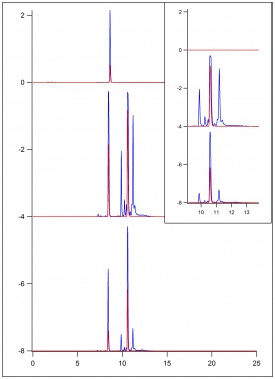Synthesis of Lignin Monomers
Motivation
Introduction
Lignin is the second most abundant organic polymer. It is found in plants, majorly in trees. Its function is to serve in the assistance of water flow throughout the plant. It forms a barrier for the evaporation, trapping the water inside.
The structure of lignin is composed of the seemingly random combination of three monomers: p-coumaryl alcohol, coniferyl alcohol, and sinapyl alcohol.
FIX THE LINKS IN THIS PARAGRAPH
These lignin monomers are derived from their acid precursors through the reduction of an aldehyde to the corresponding alcohol. While the acid precursors,p-courmaric acid (p-coumaryl alcohol), ferulic acid (coniferyl alcohol), and sinapic acid (sinapyl alcohol) may not be as abundant in nature, when it comes to the lab setting, these chemicals are easier to come by then their alcohol forms. The synthesis of theses alcohols can save a research space a great deal of money, if experiments require the alcohol forms of these monomers.
Materials
Diisobutylaluminum hydride solution (25 wt.% in toluene)
Product Number: 192724-100G
Quantity: 2
Price: $52.20
Toluene (Anhydrous, 99.8%)
Product Number: 244511-1L
Quantity: 1
Price: $60.50
Experimental
words to describe what i did
Results
Discussion
References
Lignin Biosynthesis and Structure
[Overview from Lignin and Lignans: Advances in Chemistry]
Facile Large-Scale Synthesis of Coniferyl, Sinapyl, and p-Coumaryl Alcohol

